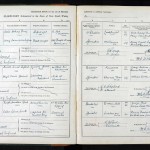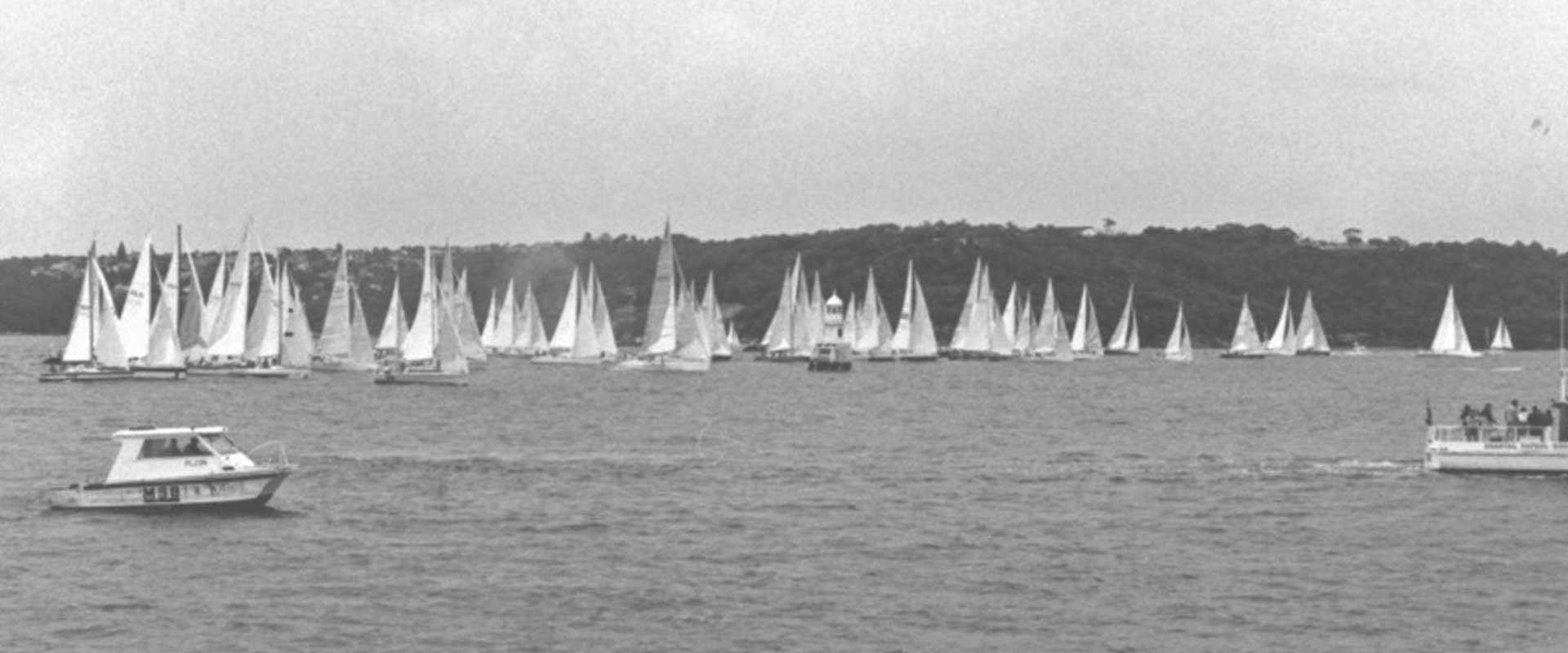| Jim Perry | |
|---|---|
 Errol (around 16), May and Jim Perry - approximately 1942 | |
| Other Name | Cecil Sidney |
| Gender | Male |
| Date Born | 1905 |
| Status | Deceased |
| Date of Death | 1983 |
| Nationality | Australian |
| Hometown | Sydney |
| Club | Middle Harbour Yacht Club |
| Boats Sailed On | Flying Cloud |
Jim Perry
Jim Perry was born in 1905 in Leichardt and died in Balmoral 1983. Both Jim and his father Syd Perry were both named Cecil Sydney Perry, but both couldn't have the same name. Jim's first wife Mary Ellen died in 1913, aged 30, and he then married May Perry.
For many years Jim lived on the Perry Houseboat Fisher Bay and built wooden yachts.
Ken Beashel once said about Jim "Best boat builder there was".
Boats Built by Jim Perry:
On the list of boat builders Sydney ship & boat builders (boatregister.net) is says Syd and Jim built: Nor Wind, Epacris, Moonya, Eudoria, Maloli, Janaway, Seawind
Stories | May and Jim PerryBy granddaughter Johanna Perry 2023 The women of this era should be acknowledged. This couple met at the Trocedero Dance Hall of George Street, as Jim had a love for Ballroom dancing. May loved to tailor her own dresses and dance. May was a bookkeeper and made the Fisher Bay Houseboat a proud home by sewing curtains and dressing all the men and her children with pride. May often speaks of wood shavings in her home. May rowed across to the Spit to get supplies which involved rowing toddler Bryan and her baby Alan. May became pregnant with Graeme (Tom) Harry Perry and it was around this time the Perry's made plans to leave the houseboat. May found it difficult to contain toddler Bryan Perrys crawling around on the houseboat. There are some photos of a gate at the front door to keep him in check. He liked to throw things overboard - including her expensive "high heels". May Perry finally made a home on land around 1952 on "Spinnaker Hill" which was close by North Balgowlah. This new home was a shed with utilities on the corner of Wonga and Garaween Street, which finally made their life easier. May was Jim's second wife and cared for Jim's elderly father Sid Perry. She was * Stepmother to Errol Perry * Mother to Bryan Perry * Mother to Alan Perry * Mother to Graeme (Tom) Harry Perry. 'Gretel' 1962: Assistance given by Shipwright Jim Perry to fellowshipwright Mr. Bill Barnett.Shipwright Jim Perry, was approached and asked to build the 12m Class America's Cup syndicate The 'Gretel' by Sir Frank Packer and Naval Architect Alan Payne. At that time, Jim Perry had secured the position of manager of the boatyard at the Royal Sydney Yacht Squadron. Jim Perry had no choice but to decline taking on the contract of the build, as he had an elderly father (Sid Perry), a wife and four his boys to provide for. Jim Perry did however, provide assistance to fellow Shipwright Bill Barnett on weeknights and weekends in his boatshed. Jim Perry suggested using wooden nails, which were much lighter than the 1400 silicon bronze screws that otherwise would have been used. Jim Perry was visited by Sir Frank Packer and Alan Payne at his home at 17 Garraween Avenue, North Balgowlah. Jim Perry passed down the story to his son Graeme 'Tom' Perry, that "Sir Frank Packer turned up at our home in his fancy Rolls Royce". North Balgowlah was a suburb close by with the nickname of 'Spinnaker Hill'. When this land was subdivided, many of the yachting community from Middle Harbour purchased this more affordable land. Mr David Payne, nephew of Alan Payne noted, "Alan said Packer had many cars including the Rolls, and he also had a Mercedes 600, a massive beast of a limousine that we could probably live in with the pets too. The neighbours must have been impressed!" Jim Perry handmade (7) sugar pine tank test miniature models of the Gretel in his garage at North Balgowlah. There models were tank tested amongst others, assisting with the choice of the most suitable design for Alan Payne's line plans. One of these models was believed to be on display in the New York Yacht Club and another was gifted to the Australian National Maritime Museum collection. The Perry family would love to try and locate any of these models. It is believed that the lead in the keel of the 'Gretel' was formed up in the dirt backyard of the Perry home at North Balgowlah. This does not seem unusual- To be confirmed by Tom Perry. Test tank model dimensions Overall :340 x 1590mm, 6kg Medium: Wood Credit line: ANMM Collection gift From Robert Halliday. Model Object no. 00029928 Of note, Mr. Robert Halliday later became the business partner of Alan Perry (number 2 son of Jim Perry) at Halliday and Perry Engineering at Rozelle. |
Pictures |  Jim Perry with sons Alan Perry (left) and Graeme 'Tom' Perry (right)  Marriage records - Cecil (Jim) PERRY "Shipwright" of The Spit Mosman to May Sugars Marriage place - 16/12/1944 St Pauls Chatswood NSW  Perry Family Electoral Role 1981 SOURCE : https://www.ancestry.com.au Electoral Rolls - Subdivision of Balgowlah 1934 - Father & Son Sid & Jim PERRY Clontarf |




